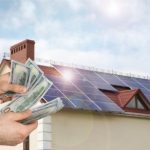The world faces the escalating consequences of global warming, the effects extend beyond just rising temperatures. One such repercussion is the accelerated degradation of solar panels, which are crucial components in the shift towards renewable energy. This essay explores the correlation between global warming and solar panel degradation, highlighting the various factors contributing to this phenomenon and its implications for the renewable energy sector.
Understanding Solar Panel Degradation: Solar panels, primarily composed of photovoltaic cells, harness sunlight to generate electricity through the photovoltaic effect. However, over time, these panels undergo degradation, leading to reduced efficiency and performance. Degradation mechanisms include:
- Light-Induced Degradation (LID): LID occurs when prolonged exposure to sunlight causes defects in the crystalline structure of silicon cells, leading to decreased efficiency.
- Temperature-Induced Degradation: High temperatures exacerbate degradation, especially in regions experiencing prolonged heat waves. Elevated temperatures can accelerate chemical reactions within the panels, resulting in material deterioration.
- Moisture and Humidity: Moisture infiltration due to increased humidity levels can cause corrosion of metal contacts and delamination of panel layers, further compromising efficiency.
Impact of Global Warming on Solar Panel Degradation: Global warming intensifies each of these degradation mechanisms, thereby hastening the decline in solar panel performance. Several factors contribute to this phenomenon:
- Rising Temperatures: With global temperatures on the rise, solar panels experience higher operating temperatures, exacerbating temperature-induced degradation. Extreme heat events become more frequent, subjecting panels to prolonged periods of stress and accelerating material deterioration.
- Increased UV Radiation: Global warming contributes to the depletion of the ozone layer, resulting in higher levels of ultraviolet (UV) radiation reaching the Earth’s surface. Excessive UV exposure exacerbates LID, leading to more rapid degradation of solar panels.
- Changing Weather Patterns: Climate change alters weather patterns, leading to more frequent and intense weather events such as storms and hurricanes. These extreme weather events pose physical risks to solar panel installations, increasing the likelihood of damage and subsequent degradation.
- Shifts in Environmental Conditions: Changes in precipitation patterns and humidity levels affect the moisture content in the air, influencing the rate of corrosion and delamination in solar panels. Increased humidity levels can accelerate the degradation of panel components, particularly in coastal regions.
Implications for the Renewable Energy Sector: The accelerated degradation of solar panels due to global warming has significant implications for the renewable energy sector:
- Reduced Efficiency and Performance: Faster degradation results in decreased efficiency and performance of solar panels, diminishing the overall energy output from solar installations. This reduction in efficiency undermines the economic viability of solar energy as a renewable energy source.
- Increased Maintenance Costs: As solar panels degrade more rapidly, the need for maintenance and replacement escalates. This incurs additional costs for solar power plant operators and homeowners alike, potentially offsetting the long-term benefits of solar energy.
- Shortened Lifespan: The accelerated degradation of solar panels shortens their lifespan, necessitating more frequent replacements and upgrades. This not only increases financial costs but also contributes to environmental concerns associated with the disposal of end-of-life solar panels.
- Impediment to Climate Goals: The degradation of solar panels undermines efforts to transition towards clean energy sources and mitigate climate change. As solar energy plays a pivotal role in reducing greenhouse gas emissions, any hindrance to its efficiency hampers progress towards achieving climate goals.
Conclusion: Global warming exacerbates the degradation of solar panels through various mechanisms, including temperature increases, heightened UV radiation, and changing environmental conditions. This accelerated degradation poses challenges for the renewable energy sector, leading to reduced efficiency, increased maintenance costs, and shortened lifespans of solar installations. Addressing these challenges requires concerted efforts to mitigate climate change and develop resilient solar technologies capable of withstanding the impacts of global warming. Only through such measures can we ensure the continued viability and effectiveness of solar energy in combating climate change.








